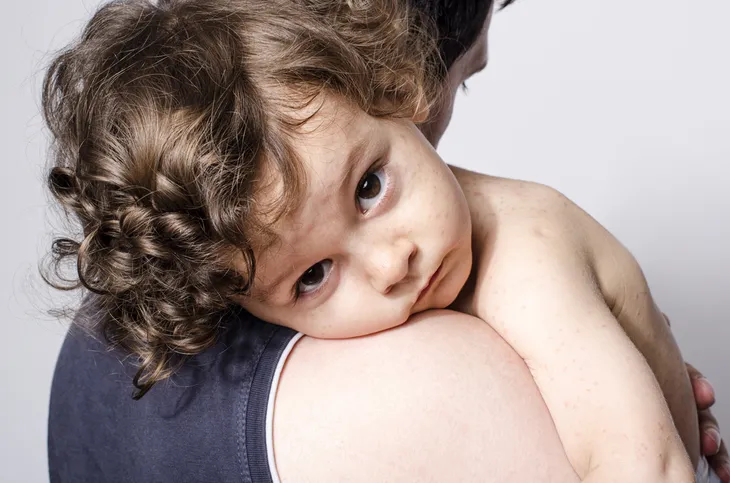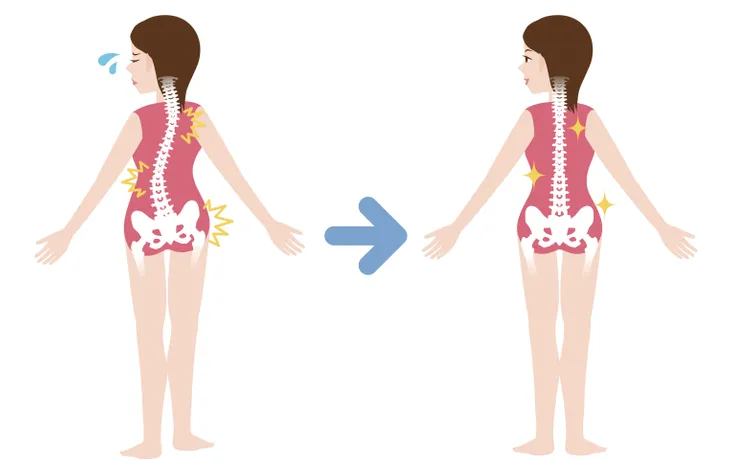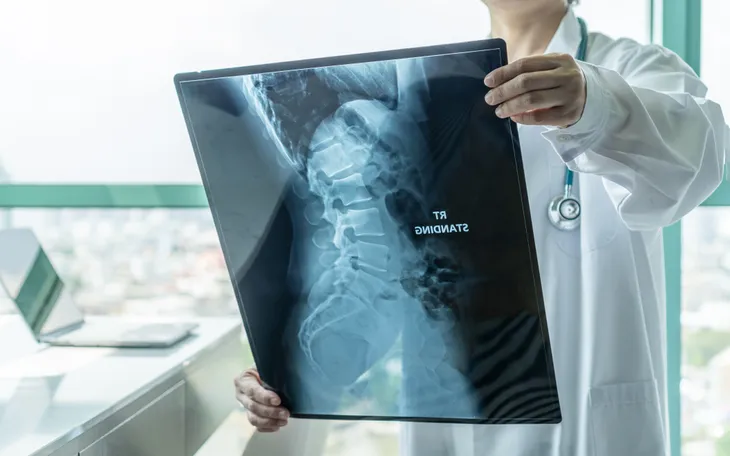Spinal muscular atrophy (SMA) is a genetic disorder. The Cleveland Clinic says about 1 in 50 Americans carry the mutated gene. And while carriers don’t develop SMA, there is a 1 in 4 chance that two carriers will have a child who develops the disorder.
SMA sufferers lose nerve cells (known as motor neurons) that control muscle movement. This causes muscle weakness and wasting (atrophy) and in turn, it can make it difficult for the person to walk, stand, and in some cases, even swallow or breathe. This is why it’s important to get informed. Here’s what you need to know about spinal muscular atrophy including the four types, common symptoms, causes, and the treatment options available.
Types of Spinal Muscular Atrophy
Spinal muscular atrophy is categorized into four types. The symptoms and severity of the disease will vary in each type, as well as how it impacts the quality of life and life expectancy. In general, the lower the number, the earlier the disease develops and the more severe the symptoms are.
First, we’ll mention type 0 which is the rarest and most severe form of SMA, says WebMD. This type develops in utero. Fetuses with type 0 tend to move less in the womb. They’re also “born with joint problems, weak muscle tone, and weak muscles for breathing,” says the source.
Type 1: Werdnig-Hoffmann Disease
Spinal muscular atrophy type 1, also called Werdnig-Hoffmann disease is a serious disease that typically develops before the age of 6-months. Children born with type 1 may have breathing problems and without treatment, it can be fatal.
Common symptoms of type 1 are muscle weakness and twitching, difficulty breathing and feeding, and eventually, a curvature of the spine, says Medical News Today. Detecting type 1 while in the womb is possible as there are usually low levels of fetal movement. However, if it’s not detected it will become noticeable within the first few months after the child is born.
Type 2: Dubowitz Disease
Spinal muscular atrophy type 2, also called Dubowitz disease, is characterized by muscle weakness, explains the National Library of Medicine. It typically develops around age 6- to 18-months.
Your child may learn to sit without support, however, they will never be able to stand or walk, says Medical News Today. The life expectancy for this type will depend on whether the child develops breathing problems. That said many individuals with SMA type 2 survive into young adulthood, says the source.
Type 3: Kugelberg-Welander Disease
Spinal muscular atrophy type 3, also called Kugelberg-Welander disease develops after 18-months. Your child may be able to sit, stand, and walk without support, however, over time walking and climbing stairs can become more difficult. This is because the disease may cause “scoliosis or contractures, a shortening of the muscles or tendons, which can prevent the joints from moving freely,” explains Medical News Today.
The disease can also cause your child to have an unusual gait and it may be difficult for them to run. A slight tremor of the fingers is also possible. Your child may also have a higher risk of respiratory infections. The good news is that children with type 3 usually have a typical life expectancy.
Type 4
Spinal muscular atrophy type 4 is the adult-onset form of the disease. It develops after the age of 21-years, says Medical News Today. It also happens to be the rarest type of SMA and the mildest.
Individuals with type 4 typically have “mild to moderate proximal weakness, which means that the condition affects the muscles closest to the center of the body,” explains the source. Individuals can usually walk normally and without challenges. They will also have a typical life expectancy.
Common Symptoms of Spinal Muscular Atrophy
The symptoms of spinal muscular atrophy will vary depending on the type and severity of the disease. Age will also play a role. Healthline explains that when the disease is diagnosed in infancy, the symptoms tend to be a lot more serious (it can even be life-threatening) compared to adult-onset SMA.
One of the first symptoms to look out for is breathing problems. An infant may have weak or underdeveloped lungs which can lead to shortness of breath, shallow breathing during sleep, and a cough. There are a few other common symptoms worth knowing too. Let’s take a closer look at these next.
Symptom: Muscle Weakness
When an infant is diagnosed with SMA, the muscles in the shoulders and the legs are typically affected first. However, when the disease develops around age 1, the muscles in their lower limbs are usually affected first.
This is an important symptom to be aware of because it can “interfere with a baby’s ability to sit upright and walk, as well as other motor development milestones,” explains Healthline. An infant might also experience poor neck and head control. Over time, muscle weakness typically gets worse. Children with SMA who are able to walk may lose the ability to walk when they get older, explains the source.
Symptom: Problems with Feeding
SMA can also affect the muscles that help you swallow. As a result, your child may not be able to eat and drink safely. Infants and children with SMA have an increased risk of choking. It’s also possible that food and drink may enter their lungs, known as aspiration. This symptom is a risk on its own but it can also lead to malnutrition.
Healthline says a swallowing specialist may be able to help your child practice eating and drinking safely. Older children may only need their food cut up into smaller pieces to reduce their risk of choking. In some cases, a feeding tube may be required.
Other Possible Symptoms of Spinal Muscular Atrophy
Scoliosis (or irregular curvature of the spine) is another possible symptom of spinal muscular atrophy. It can develop “because the muscles that normally support your spine are too weak to hold it in place,” explains Healthline. Scoliosis can affect the individual’s posture and mobility, but it can also cause pain or numbness.
Another possible symptom of SMA is frequent respiratory infections, such as pneumonia. This can happen due to breathing problems caused by SMA. Respiratory infections are a serious risk for infants and are often the reason why “babies with early-onset SMA may only live a few months or years,” explains the source.
What Causes Spinal Muscular Atrophy?
Spinal muscular atrophy is a genetic disorder and it’s caused by a specific gene mutation. Changes in the genes known as survival motor neuron 1 (SMN1) and SMN2 can cause motor neurons in the spinal cord and brain stem to stop working, explains Medical News Today.
The source also says that these genes “give instructions for creating the protein that is necessary for motor neurons to function.” Motor neurons are your nerve cells that control movement.
Keep in mind, an individual can only develop SMA if both of their parents carry the gene mutation. That said, even if both of the parents have it, the child only has a 1 in 4 chance of inheriting it.
Diagnosing Spinal Muscular Atrophy
The Cleveland Clinic points out that some symptoms of spinal muscular atrophy can be similar to other neuromuscular disorders, such as muscular dystrophy. To confirm a diagnosis of SMA, your doctor will start with a physical exam and a review of your medical history.
Next, your doctor will likely order a few other tests to confirm a diagnosis. Some of these may include a blood test, genetic test, nerve conduction test, and a muscle biopsy. The source also says if you’re pregnant and have a family history of SMA, there are prenatal tests available to find out if your unborn baby has the disease.
Treatment
Unfortunately, there is no way to prevent SMA, and currently, there is no cure. That said, there are treatments available that may be able to help you or your child live a healthy life. For starters, your doctor may prescribe medication to help reduce the severity of the symptoms.
Physical therapy is also part of the treatment. Medical News Today says various types of assistive devices can also help improve an individual’s life expectancy and quality of life. Some of these include ventilators, powered wheelchairs, and modified access to computers.
What Is the Outlook?
Now that you have a better understanding of what spinal muscular atrophy is and why it happens, you might be wondering what is the outlook. The quality of life and life expectancy for individuals with SMA will greatly vary depending on the type.
The Cleveland Clinic says, infants with type 1 often pass away before their second birthday. Children diagnosed with type 2 or 3 may live a full life, but again, it depends on the severity of their symptoms. Adults who develop type 4 often remain active and have a normal life expectancy. If you’re concerned about your risk of SMA or your future child’s risk, talk to your doctor.
















